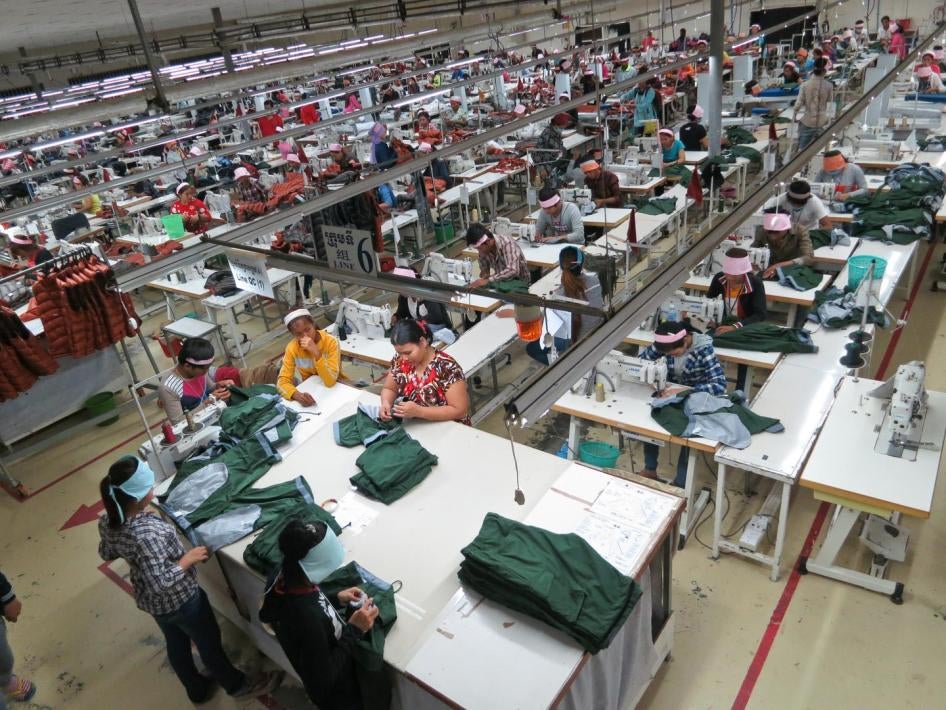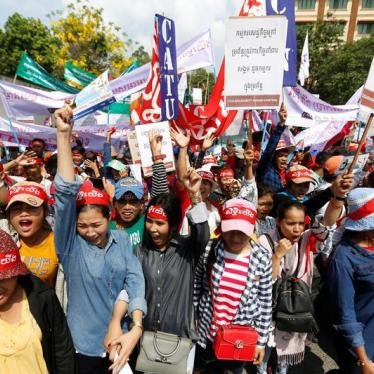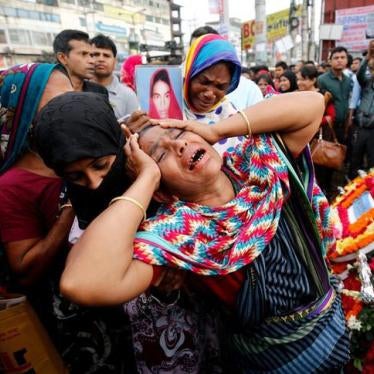This spring marks a solemn milestone. More than five years have passed since a series of deadly fire and building accidents in Pakistan and Bangladesh together killed more than 1,500 workers and injured thousands more.
In the aftermath of these disasters, labor advocates ploughed through debris and dead bodies or interviewed traumatized workers to get them to recall brand names. That image underscored just how woefully inadequate apparel brands’ approach to worker rights had been.
Five years later, we still need more information about the brands that workers produce for, to ensure that workers’ rights are respected, and their safety protected.
Brand-label information matters not just for fire and building safety. The $2.4 trillion apparel industry, which predominantly employs women as garment workers, witnesses a host of labor abuses. These range from poor wages to factory owners and managers denying paid maternity benefits or even firing pregnant workers to harassment of union leaders to forced overtime work to workplace sexual harassment.
The governments of producing countries worldwide are primarily responsible for working conditions and labor law compliance. But under international standards, global apparel and footwear companies also have a responsibility to ensure that the rights of workers are respected throughout their supply chain.
One of the key building blocks for better working conditions is more visibility. Brands should make sure workers and the public know which factories are producing for which brands. Some companies sidestep this responsibility, but more and more companies are now disclosing key information.
In 2016, Human Rights Watch joined eight international labor rights groups and global unions advocating for a basic level of transparency in the garment industry. The coalition developed a “Transparency Pledge,” a uniform minimum standard for transparency, drawn from industry good practices. The pledge is a modest starting point for company disclosure.
At least 17 leading companies have committed to publishing all the information sought in the pledge. Another 18 companies, though falling short of pledge standards, committed, for the first time, to publishing their supplier factory information.
Today, a number of leading companies, including Adidas, ASOS, Benetton, C&A, Esprit, Gap Inc., H&M, Hugo Boss, Levi’s, Marks and Spencer, New Balance, Nike, Patagonia, Primark, and Puma, have disclosed at least the names and addresses of their supplier factories.
But a vast majority of the industry, including big companies like Walmart—which co-founded the Sustainable Apparel Coalition—and other fast-fashion leaders like Inditex (owns Zara), Mango, Desigual, Urban Outfitters, and Forever 21 are among those that still do not publicly disclose which factories produce their branded clothes.
Such public disclosure is important in the apparel sector because the industry constantly grapples with unauthorized subcontracting. Some of the worst labor abuses occur in illegally subcontracted factories. These sites typically hire workers on a casual basis—denying them protections like maternity leave and sick leave. Workers find it harder to form unions and collectively bargain for better protections in these small factories.
When an apparel company publicly discloses its production sites, it allows monitoring where it is most needed. Workers need this information, as do those who may advocate on their behalf, including union representatives, local and international nongovernmental organizations, lawyers, journalists, and academics.
The more supply chain data is publicly available, the more likely it is that abusive conditions will be reported—whether publicly or to the brands whose supply chains are implicated—and the more likely it becomes that problems can be solved.
Transparency not only provides workers and advocates critical information about where to turn with problems. It builds confidence among consumers who care about the ethical business practices and allows workers to hope that brands profiting from their labor will hear of their struggles—and intervene.
Brand Arguments
Some brands that reject transparency invoke the oft-repeated trope of competitive disadvantage. But leading companies that already disclose factory information have not said they suffer any financial harm as a result. And publishing supplier factory information would allow brands sourcing from the same factory to potentially collaborate to prevent labor abuses or dangerous conditions.
Some brands say their membership in initiatives like the Bangladesh Accord on Fire and Building Safety, a binding agreement between brands and global unions forged after the Rana Plaza collapse, proves their commitment to transparency. The initiative has had a positive impact on fire and building safety in Bangladesh. Joining the Bangladesh Accord is important—more brands should join the extended Accord with its improved protections for workers’ freedom of association. But the Accord, which is limited to Bangladesh, is no substitute for a company’s own transparency practices governing its global supplier factories.
It bears repeating that even the best fire and building safety program will not solve many of the labor abuses women workers face in factories. Women workers not only endure poor working conditions but also find it harder to climb up the ranks of workers, performing supervisory roles. Apparel companies should invest in all channels that allow workers to report labor abuses and seek redress. Transparency is one more—yet powerful vehicle—that can be effectively used to help workers by labor advocates.
At least one company, Inditex (which owns Zara and other brands), has refused to publish the names and addresses of its supplier factories, arguing that it privately discloses the data to global unions with which it signed an agreement to improve working conditions throughout its supplier factories. But publishing supplier factory information would only amplify the effectiveness of such a framework agreement, as other brands like H&M, Tchibo, and ASOS have shown.
Nowhere to Hide
Investors, including pension funds, can use their role as owners to press for transparency and gender-sensitive workplaces. Investor groups such as SHARE Canada and the Interfaith Center for Corporate Responsibility regularly engage with companies on supply-chain transparency. It is not just a social imperative, but can help reduce their financial risks.
“Soon there won’t be much to hide,” John Ruggie, the former UN special representative for business and human rights told Human Rights Watch. He noted the increasing weight investors are giving to economic, social, and governance indicators. “People who are either inside or servicing the investment community will vacuum up everything that’s out there. They are using everything from GPS to Google Earth to collect information.”
Multi-stakeholder initiatives should make supply chain disclosure a part of the criteria for ongoing apparel companies’ membership in such initiatives. Governments should also compel transparency and other mandatory human rights processes in an apparel company’s supply chain. Only governments can impose penalties and set enforceable standards.
Tragically, the combination of reluctance to regulate companies and overall government apathy has meant there have not been strong legislative efforts worldwide to address human rights concerns in the garment industry. Legislation that specifically requires apparel and footwear companies to publish supplier factory information would be an important step.
Nevertheless, there are increasing attempts by some governments to legislate on company responsibilities. The UK Modern Slavery Act, which requires companies to monitor for modern slavery in their supply chains, does not specifically require companies to publish supplier factory information. But it has led a number of UK apparel and footwear companies to publish supplier factory information as part of theira overall risk mitigation strategy on modern slavery in their supply chains. A French law that requires companies to engage in human rights due diligence is another good example that can be built on.
As consumers, we owe it to those who produce our clothes and shoes to demand that their locations be publicized. So please spend a few minutes to check if your favorite brands are already transparent, and ask them why if not.










